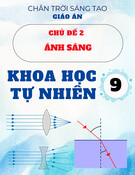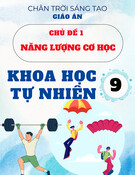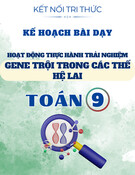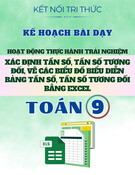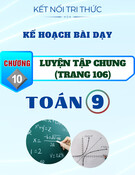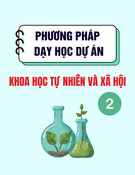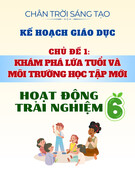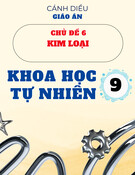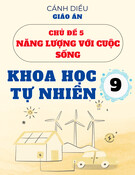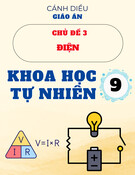PERIOD 34 / WEEK 12
UNIT 5: WONDERS OF VIET NAM LESSON 1: Getting started
I. OBJECTIVES: By the end of the lesson, Ss will be able to (cid:0) use lexical items to describe wonders of Viet Nam
II . PREPARATION: sub board, pictures, cassette III. PROCEDURES:
Teacher’s and students’ activities Content
Activity 1:
Play the recording. Ss listen and read along. T can play the recording more than once. Pause the recording at the appropriate places if Ss need help with comprehension. Ask Ss questions about the picture: *Vocabulary recommend(v) rickshaw(n) bother(v) complex (adj) be worth (+V ing)
1Have you ever visited a wonder of Viet Nam? 2What is it? Where is it? 3What is special about it? First, have Ss work independently. Then allow them to share their answers before discussing as a class.
Tell Ss to refer to the conversation to fid the expressions. Practise saying the expressions (play the recording again as a model if necessary). Pay attention to intonation when asking for, making, or responding to recommendations.
Activity 2:
aRead the conservation again and fill in each gap (with no more than three words). 1Hue City 2three 3go by air 4beautiful sights 5use rickshaw 6the museums b Read the conversation again and find the expressions Veronica and Mi use to ask for, make, and respond to recommendations.
2a) Write the responses into the correct column
Have Ss work independently. Then allow them to share their answers before playing the recording for them to check. Play the recording for Ss to repeat the phrases. T may remind Ss to pay attention to the intonation.
Ss work independently to do the matching. Allow them to share their answers before giving comments, and make any corrections. Ask Ss to work in pairs, practising the exchanges. T may go around to provide help.
Activity 3: to b)Match sentences (14) sentences (ad) to make exchanges. Then practice the exchanges with a partner. 1b; 2c; 3d; 4a
3) a Write places of interest under the pictures. 1b; 2c; 3e; 4a; 5f; 6d First, have Ss work in pairs to match the names of the places of interest to the pictures. Then check with the whole class. T may ask Ss to say the names of these places of interest in Vietnamese and where they are situated.
Ss do the exercise individually and then compare their answers with a partner. Check the answers with the whole class.
Activity 4:
T gets ss to put places of interest in the correct column. Natural wonders: Ha Long, Phong Nha Cave; Cuc Phuong National Park Manmade wonders: One Pillar Pagoda, Sai Gon NotreDame Cathedral, Po Nagar Cham Towers
Model this activity with a more able student. Then ask Ss to work in pairs. T may go around to provide help. Note that weaker Ss can stick very closely to the model by substituting the names of different wonders in the conversation. However, it’s good to encourage more able Ss to create their own versions of the conversation. Call on some pairs to practise in front of the class, remembering that this is a fluency stage and correction should be reserved for the end and kept to a minimum so as not to deter Ss from taking risks with the language.
IV. HOMEWORK:
Write new words then learn them by heart. Copy the exercise into notebooks. Prepare A CLOSER LOOK 1
PERIOD 35 / WEEK 12
UNIT 5: WONDERS OF VIET NAM LESSON 2: A closer look 1
I. OBJECTIVES: By the end of the lesson, Ss will be able to (cid:0)
identify in which situations to stress short words (a, of,…) in sentences and say them correctly.
II . PREPARATION: sub board, pictures, cassette III. PROCEDURES:
Teacher’s and students’ activities Content
Activity 1:
Ask Ss to do the exercise independently. Then have them share their answers with one or more partners. T may ask for translation of the nouns in the box to check their understanding. With a stronger class, ask Ss to find some reallife example of the nouns in the box.
Activity 2:
Ss work independently and then share their answers with one or more partners. T may ask for translation of some adjectives to check their understanding.
Activity 3: cavern(n) fortress(n) tomb(n) astounding(adj) picturesque(adj) 1Write the words with the correct pictures. 1B; 2D; 3A 4E; 5C; 6F 2Fill each blank with a suitable adj from the box. 1located/situated 2picturesque 3astounding 4geological 5administrative
3aMatch the nouns in A to the definitions in B. 1b; 2d; 3a 4e; 5c Ss work in pairs to match the nouns to the definitions. Allow them to share their answers before checking with the whole class. T may ask for translation of the nouns in the box to check their understanding. With a stronger class, ask Ss to make some example
sentences with these words.
Have Ss complete the sentences individually, using the phrases in 3a. Then have some of them read out their answers before checking as a class.
bUse the nouns in 3a to complete the sentences. 1structure 2measures 3setting 4complex 5recognition Activity 4:
Play the recording and ask Ss to listen and repeat the sentences, paying attention to whether the words in red in each sentence are stressed or not. T may play the recording as many times as necessary.
Read through and explain the rule in the REMEMBER! box and ask some Ss to give some examples of the cases where the short words (a, of, the, etc.) are used in the strong form.
Activity 5:
4Listen and repeat, paying attention to the words in red in each pair of sentences. 1. A: This is a (S) solution, but not the only one. B: Attempts to f nd a (W) solution have failed. 2. A: I’m fond of (W) bananas. B: Bananas are what I’m fond of (S). 3. A: It’s not trick and (S) treat; it’s trick or (S) treat. B: I need Peter and (W) Mary or (W) John and (W) Nick to help me. 4. A: It’s good but (W) expensive. B: You shouldn’t put ‘ but’ (S) at the end of the sentence.
First, ask Ss to work in pairs to practise reading aloud the minitalks and decide in which sentences the short words are stressed. Then play the recording. Ss listen and underline the stressed words. T may pause after each sentence and ask them to repeat chorally. Correct their pronunciation if necessary.
Activity 6:
5Read the minitalks and underline the short words using the strong form. 1. A: Where are you from? B: I’m from Ha Noi. 2. A: Can you come and check this paragraph for me? B: It’s OK but you shouldn’t use ‘ and’ at the beginning of the paragraph. 3. A: Did you ask her to join our group? B: I’ve asked her several times but she doesn’t want to. 4. A: Is this letter from Peter? B: No, the letter is to him, not from him. Ss practise the minitalks in pairs. T may go around to provide help. Call on some pairs to practise the minitalks in front of the class. Correct their pronunciation if necessary.
IV. HOMEWORK:
Write new words then learn them by heart. Copy the exercise into notebooks. Prepare A CLOSER LOOK 2
PERIOD 36 / WEEK 12
UNIT 5: WONDERS OF VIET NAM LESSON 3: A closer look 2
I. OBJECTIVES: By the end of the lesson, Ss will be able to (cid:0) use the impersonal passive and the verb suggest+ Ving/clause with should
II . PREPARATION: sub board, pictures, cassette III. PROCEDURES:
Teacher’s and students’ activities Content
Activity 1:
1aRead part of the conversation. Pay attention to the underlined part. bWhen do we use the impersonal passive? Can you think of any rules? It+ to be +P.P+ that + S+ V
2Complete the sentences using the correct passive form of the verbs in brackets. 1It is known… 2It is believed… 3It is reported … 4It is claimed… 5It is understood… 6It is expected... First, ask Ss to study part of the conversation from GETTING STARTED. Draw Ss’ attention to how to form the impersonal passive by analysing the underlined part and the rule. Then ask some more able Ss to give some examples to illustrate. Next, ask Ss to read the conversation in GETTING STARTED again and underline another impersonal passive that they can f nd. Ask them to share their findings with a partner before checking with the whole class. First have Ss cover up the yellow box in1b and try to work out the usage themselves for this structure. Accept all their ideas. Now uncover the box and allow Ss to analyse the rule and the examples in the box. Then ask some Ss to give some more examples to check understanding. Activity 2:
Ss complete the sentences independently. Ask them to share their answers with a partner. Ask some Ss to say their answers aloud. Give comments and make any correction if necessary. Activity 3:
3Here are some things we hear about Po Nagar Cham Towers.Write sentences about it using the impersonal passive. 1It is claimed that Po Nagar Towers ….Viet Nam. 2It is said that The Cham people…. 3It is believed that the Po Nagar … 4It is understood that Po Nagar Kalan… Ss write the sentences independently, then compare them with one or more partners. Ask some Ss to say their sentences aloud. Give comments, and make any
5It is known that a sculpture… 6It is thought that in the 17th century… correction if needed. Activity 4:
4aRead part of the conversation. Pay attention to the underline part. bWhen do we use suggest+ V ing/clause with should? Can you think of any rules?
Ask Ss to read part of the conversation from GETTING STARTED, paying attention to the underlined part. Then explain to Ss the structures used with the verb suggest and ask them to make some examples to illustrate. Ask Ss to study the rules in the box. Draw Ss’ attention to the use of the verb suggest by analysing the examples in the box in 4b and the REMEMBER! box. Then ask some able Ss to give some more examples
Activity 5:
should suggest we
Ask Ss to do the grammar exercise individually. Remind them to refer to the box in 4b and the REMEMBER! box and use a dictionary if necessary. Then have Ss compare their answers in pairs before checking with the whole class.
Activity 6: 5Write answers to the following questions using suggest+Ving/clause with should and the prompts in brackets. Then practice them with your partner. The first one has been completed for you. 1I suggest the government should limit the number of visitors every day. 2I control/controlling deforestation. 3I suggest we should put/putting these valuable things in high security places. 4I suggest we should raise/raising the money. 5I suggest we should reduce/reducing smoke and exhaust fumes.
First, model this activity with a more able student. Then ask Ss to work in pairs. T may go around to provide help. Call some pairs to practise in front of the class.
6aWork in pairs. Tell your partners what they should do in the following situations, using suggest +Ving/clause with should. bNow report your partner’s ideas to another partner.
Ask Ss to work in pairs, reporting their previous partners’ ideas to the new ones. Then T may ask some Ss to report their previous partners’ ideas to the whole class.
IV. HOMEWORK:
Write new words then learn them by heart. Copy the exercise into notebooks. Prepare COMUNICATION
PERIOD 37 / WEEK 13
UNIT 5: WONDERS OF VIET NAM LESSON 4: Communication
I. OBJECTIVES: By the end of the lesson, Ss will be able to (cid:0) use lexical items to describe wonders of Viet Nam
II . PREPARATION: sub board, pictures, cassette III. PROCEDURES:
Teacher’s and students’ activities Content
Activity 1:
Game: Matching (Words and meaning) *Vocabulary proper name contestant(n) spectacular(n) round(in a game)
Ask Ss to read the instruction carefully and remind them to remember the key words in the statements. Play the recording and ask Ss to decide whether the statements are true (T) or false (F). Elicit the answers from Ss and write them on the board. Have them correct the false statements where applicable. Play the recording again for Ss to check the answers. Activity 2:
1Listen to the radio programme from 4Teen. Then decide whether the following statements are True or False. 1F; 2T 3F; 4T 5F 2Listen to the next part of the radio programme. Then fill in the gaps with the words/numbers your hear. 1central 2two hundred 3park 4discovered 5paradise
First, have Ss read the next part of the radio programme and guess what the missing word for each gap in the conversation is. Then play the recording. The first time, ask Ss to close their books and listen only. Then play the recording again and allow Ss to fill in the gaps as they listen. Ask Ss to share their answers in pairs before playing the recording the final time to allow pairs to check their answers. If time is limited, T may play only the sentences that include the information Ss need for their answers. T may ask Ss to read the conversation again, paying attention to the meaning of the words/phrases:
proper name, contestant, spectacular, round.
Activity 3:
3Write six sentences that describe one of the wonders of Viet Nam you know. Ask Ss to work individually, each writing six sentences that describe one of the wonders of Viet Nam they know. Remind them not to let anyone know their sentences.
Activity 4:
4Work in groups. Play the game “What’s What?”
Ask Ss to work in groups of four or five to play the game ‘ What’s What?’ T goes around the groups to provide help.
IV. HOMEWORK:
Write new words then learn them by heart. Copy the exercise into notebooks. Prepare SKILLS 1
PERIOD 38 / WEEK 13
UNIT 5: WONDERS OF VIET NAM LESSON 5: Skills 1
I. OBJECTIVES: By the end of the lesson, Ss will be able to (cid:0) practice their reading and speaking skills related to the topic.
II . PREPARATION: sub board, pictures, cassette III. PROCEDURES:
Teacher’s and students’ activities Content
Activity 1: Ask Ss to scan the article to f nd the words: vast, pilgrims, theme, backdrops, and reign. Help Ss work out the meanings of these words from the context.
Guessing game Picture and some information vast(a): extremely large in size, amount,… pilgrims(n): a person who travels to a holy place for religious reasons. theme(n): the subject or main idea in a talk, piece of writing, or work of art backdrop(n): the general scene in which an event takes place reign(n): a period during which a king, queen, emperor,etc,rules.
Activity 2: T may set a longer time limit for Ss to read the text again and answer the questions. Ask Ss to note where they f nd the information that helps them to answer the questions. Ss can compare their answers with a partner before discussing them as a class.
1It is located in Huong Son Commune, My Duc District, Hanoi. 2It includes Den Trinh (Presentation Shrine), Thien Tru and the Perfume Temple. 3The centre of this complex, the Perfume Temple, also known as Chua Trong, is located in Huong Tich Cavern. 4Its beauty has been used as the
theme of famous songs and a topic of lyric poetry. 5Pilgrims from all Viet Nam do.
Activity 3: First, ask Ss to work in pairs, to put the things that have caused damage to the manmade wonders of Viet Nam in order of seriousness. T may go around to provide help. After Ss finish, call on some pairs to report their choices and give the reasons for them.
to protect and preserve
Example: A: It is reported that many of our man made wonders have been damaged. What should we do to protect and preserve them? B: I suggest that we should limit the number of tourists visiting them every day. A: That’s a good idea. I’d like to suggest raising money to restore and preserve them... Activity 4: a Ask Ss to work in pairs, and use the ideas in 3 to suggest the manmade ways wonders of Viet Nam. Go round to provide help. b Have the representative of each pair in turn report their best ideas to the whole class. Give comments and make any correction if necessary. Activity 5:
IV. HOMEWORK:
Write new words then learn them by heart. Copy the exercise into notebooks. Prepare SKILLS 2
PERIOD 39 / WEEK 13
UNIT 5: WONDERS OF VIET NAM LESSON 6: Skills 2
I. OBJECTIVES: By the end of the lesson, Ss will be able to (cid:0) practice their listening and writing skills related to the topic.
II . PREPARATION: sub board, pictures, cassette III. PROCEDURES:
Teacher’s and students’ activities Content
What do you know about Ha Long Bay? recognition(n) situate(v) existed(a) unforgettable(a)
Activity 1 : Ask Ss to read the instruction carefully and remind them to underline the key words in the statements. Play the recording and ask Ss to decide whether the statements are true or false. Then ask two or three Ss to write their answers on the board. Play the recording again for Ss to check the answers. 1) 1T ;2F ; 3T ; 4T
2) 1Northeast ; 2UNESCO 3picturesque ; 4zones 5caverns ; 6astouding
Activity 2 : Ss work in pairs to discuss the missing word for each gap from the information they have heard in 1. . Play the recording again and allow Ss to f ll in the gaps as they listen. Ask Ss to share their answers in pairs before playing the recording the final time to allow pairs to check their answers. If time is limited, T may play only the sentences that include the information Ss need for their answers. Activity 3 : Ask Ss to make notes about a wonder of Viet Nam that they or their family members have visited in the given table. Remind them that they do not have to write full sentences and they can use abbreviations. Then ask Ss to share their notes with their partners. T may ask some more able Ss to read out
their notes to the whole class.
4a. Use your notes in 3 to write a short article describing a wonder of Viet Nam.
Activity 4 : a. First, have Ss study the guidelines on how to write a passage describing a place in the REMEMBER! box. Set up the writing activity. Ss should use their notes in 3 and the notes in the REMEMBER! box to help them to structure their writing. T can also help them get started by writing the opening sentence on the board, based on the audio script: It is said that [wonder] is a [adjective] place …
4b. Swap articles with a partner and review each other’s drafts. Make revisions and corrections if necessary. Then present your final article to the class.
b. Ask Ss to write the first draft. T may go around to comment or provide help. Then have Ss write their final version in class or at home. If they write in class, they can also do it in pairs or groups. T may display all or some of the work on the wall/ noticeboard. Other Ss and T give comments. Ss edit and revise their writing for homework.
IV. HOMEWORK:
Write new words then learn them by heart. Copy the exercise into notebooks. Prepare LOOKING BACK
PERIOD 40 / WEEK 14
UNIT 5: WONDERS OF VIET NAM LESSON 7: Looking back & Project
(cid:0) I. OBJECTIVES: By the end of the lesson, Ss will be able to practice review the vocabulary and grammar in unit 5.
II . PREPARATION: sub board, pictures, cassette III. PROCEDURES:
Teacher’s and students’ activities Content
1) 1b; 2d; 3e; 4a;5c
Activity 1 Have Ss match adjectives in column A to definitions in column B. Ss do the ex.
2) 1fortress; 2limestone 3cavern; 4tombs
Activity 2 Ask Ss to underline the correct word in each sentence. Ss do the task.
3) 1complex; 2measures 3recognition; 4setting 5structure Activity 3 Get Ss to use the words from the box to complete the sentences. Ss do the task.
4) 1/It is expected that more than….. 2/It is reported that Thien Duong … Activity 4 Ask Ss to rewrite the following sentences using the impersonal passive.
Ss write the answers on the board.
3/It is believed that the Perfume… 4/It is said that Ha Long Bay… 5/It is hoped that many defensive…
Activity 5 Ask Ss to work individually to write down four bad things that happened to them yesterday. Then have Ss discuss with a partner what they should do in each situation. Remind them to use the verb suggest to tell their ideas about what their partners should do in each situation.
Example: A: It’s well worth going to the Perfume Pagoda. It’s very picturesque. B: Yes, that’s what I’ve heard.
7) 1E; 2D; 3F 4A; 5C; 6B
PROJECT The wonders of Viet Nam!
Activity 6 Model this activity with a more able student. Ask Ss to work in pairs, one student using prompts in the box to make suggestions and another responding to them. T may have Ss refer to how to make and respond to suggestions or recommendations in GETTING STARTED. Go around to provide help. Call on some pairs to practise in front of the class. Activity 7 First, ask Ss to do the task individually to choose the sentences (AF) to complete the conversation. Then ask them to check their answers with a partner. Confirm the correct answers. Ask Ss to practise the conversation with their partner. Finished! Finally, ask Ss to complete the selfassessment. Identify any difficulties and weak areas and provide further practice. 1 Ask Ss to read the brochure about the Complex of Hue Monuments and point out what information should be included in a brochure about a place of interest. 2 Ask each group to choose one of the wonders of Viet Nam they have visited and design a brochure about it. If time allows, T may let Ss complete the project in class. Otherwise, Ss can complete the project as homework. 3 When Ss have f nished their brochures, T asks them to display their leaf ets on the wall
/noticeboard. T may choose some of the brochures and ask Ss to give comments. Finally, ask the whole class to vote for the best.
IV. HOMEWORK:
Write new words then learn them by heart. Copy the exercise into notebooks. Prepare REVISION FOR THE 45MINUTE TEST

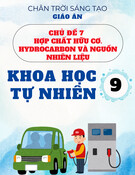
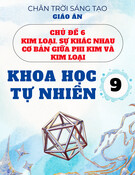
![Giáo án Khoa học tự nhiên 9 Chân Trời Sáng Tạo chủ đề Điện từ: [mô tả/định tính]](https://cdn.tailieu.vn/images/document/thumbnail/2025/20250815/quynhanh02/135x160/560_giao-an-khoa-hoc-tu-nhien-9-chan-troi-sang-tao-chu-de-4-dien-tu.jpg)
